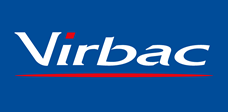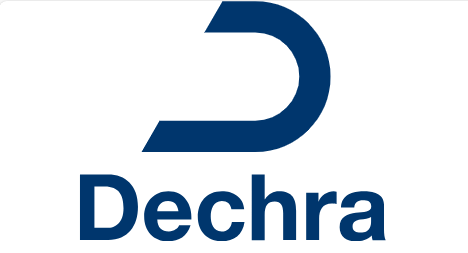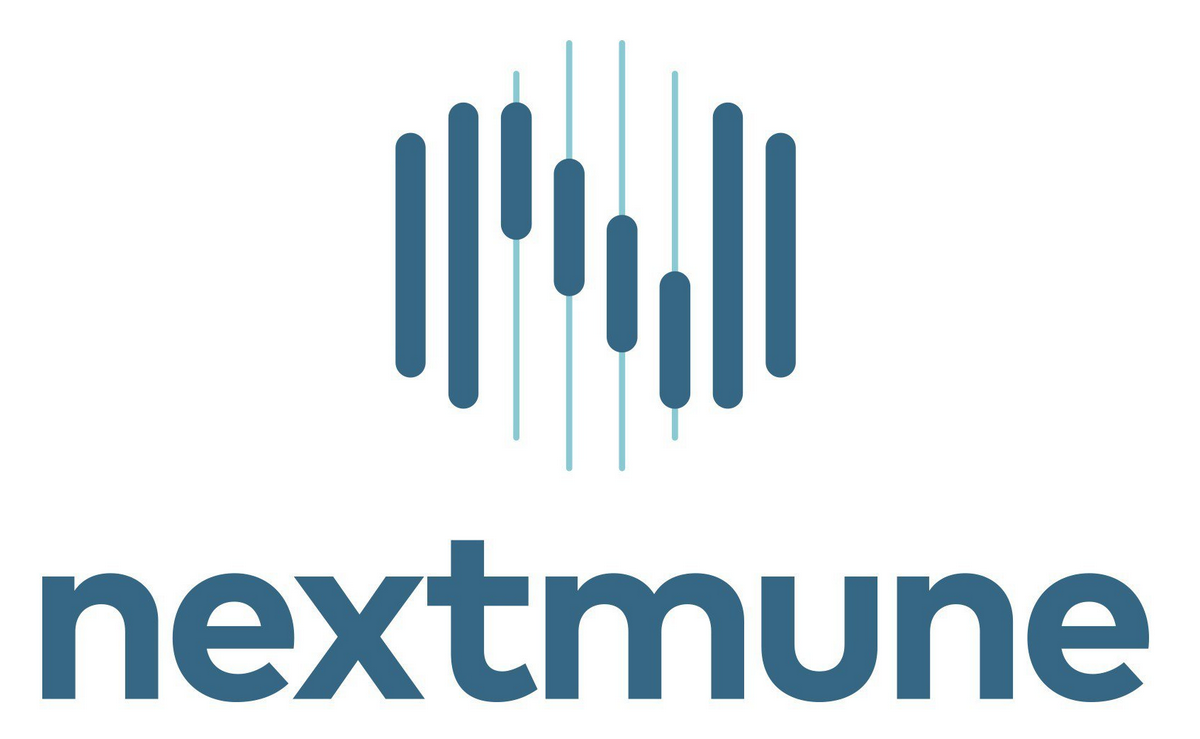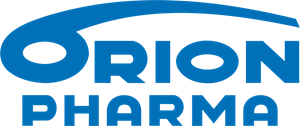Combination therapy
No results were found for your selected species
Prid delta
Active substance
ATC code
Species
Cattle: cows and heifers.
Indications
For the control of the œstrus cycle in cows and heifers including:
- Synchronisation of œstrus including fixed time artificial insemination (FTAI) protocols.
- Synchronisation of oestrus of donor and recipient animals for embryo transfer. To be used in combination with a prostaglandin (PGF2α or analogue)
- Induction and synchronisation of œstrus in cycling and non cycling cattle including fixed time artificial insemination (FTAI) protocols.
- In cycling cattle. To be used in combination with prostaglandin (PGF2α) or analogue.
- In cycling and non-cycling cattle. To be used in combination with gonadotropin releasing hormone (GnRH) or analogue and PGF2α or analogue.
- In non-cycling cattle. To be used in combination with PGF2α or analogue and equine chorionic gonadotrophin (eCG).
Dose to be administered and administration route
Vaginal use.
1.55 g of progesterone / animal for 7 days.
Judgment on the protocol to be used should be made by the veterinarian responsible for treatment, on the basis of the treatment objectives of the individual herd or cow. The following protocols could be used.
For synchronisation of oestrus (including synchronisation of oestrus of donor and recipients animal for embryo transfer)
• Insert the device for 7 days.
• Inject a prostaglandin (PGF2 α) or analogue 24 hours prior to device removal
• Removal of the device
• In animals that respond to treatment the onset of oestrus generally occurs within 1-3 days after removal of the device. Cows should be inseminated within 12 hours of first observed oestrus.
For the induction and synchronisation of oestrus for Fixed Time Artificial Insemination (FTAI)
The following FTAI protocols have been commonly reported in the literature:
In cycling cattle:
• Insert the device for 7 days.
• Inject a prostaglandin (PGF2 α) or analogue 24 hours prior to device removal
• Removal of the device
• Animals should be inseminated 56 hours after removal of the device.
![]()
In cycling and non-cycling cattle (including recipient cows):
• Insert the device for 7 days.
• Inject GnRH or analogue at the device insertion.
• Inject a prostaglandin (PGF2 α) or analogue 24 hours prior to device removal
• Animals should be inseminated 56 hours after removal of the device, or
• Inject GnRH or analogue 36 hours after device removal and FTAI 16 to 20 hours later.
Or in alternative,
• Insert the device for 7 days.
• Inject GnRH or analogue at the device insertion
• At device removal inject prostaglandin (PGF2 α) or analogue
• Inject GnRH or analogue 56 hours after removal of the device
• Animals should be inseminated 16 to 20 hours later
In non-cycling cattle:
• Insert the device for 7 days.
• Inject a prostaglandin (PGF2 α) or analogue 24 hours prior to device removal
• Inject eCG at the time of the device removal
• Animals should be inseminated 56 hours after removal of the device.
Device application information:
Using an applicator, insert one device into the vagina of the animal. The intravaginal device should stay in place for 7 days.
The device is intended for single use only.
Applicator method of use and Insertion:
A device applicator should be used for administration, following the procedure described below:
1. Clean and disinfect the applicator in a non-irritant antiseptic solution before use.
2. Fold the device and load into the applicator. The end of the device tail should be outside of the applicator. Care should be taken to avoid unnecessary or prolonged handling of the product to minimise transfer of the active substance to the operator's gloves.
3. Apply a small quantity of obstetrical lubricant to the end of the loaded applicator.
4. Lift the tail and clean the vulva and perineum.
5. Gently insert the applicator into the vagina, first in a vertical direction and then horizontally until some resistance is encountered.
6. Make sure the removal tail is free, press the handle of the applicator and pull it out, leaving the removal tail hanging from the vulva.
7. Clean and disinfect the applicator after use and before use on another animal.
Removal:
Remove 7 days after insertion by gently pulling on the removal tail. On occasions the tail may not be visible from the outside of the animal, in such cases it may be located in the posterior vagina using a gloved finger. Withdrawal of the device should not require force. If any resistance is encountered a gloved hand should be used to ease removal.
If there is any difficulty in removal from the animal beyond that itemised above veterinary advice must be sought.
Adverse reactions
During the course of the seven day treatment, the device may induce a mild local reaction (i.e. inflammation of the vaginal wall). A clinical study carried out with 319 cows and heifers has demonstrated that 25% of animals presented ropy or cloudy vulvar secretions at the device removal. This local reaction disappears rapidly without any treatment between removal and insemination and does not affect fertility at inseminations nor pregnancy rates.
The frequency of adverse reactions is defined using the following convention:
- very common (more than 1 in 10 animals treated displaying adverse reaction(s))
- common (more than 1 but less than 10 animals in 100 animals treated)
- uncommon (more than 1 but less than 10 animals in 1,000 animals treated)
- rare (more than 1 but less than 10 animals in 10,000 animals treated)
- very rare (less than 1 animal in 10,000 animals treated, including isolated reports).
Dispensing
POM-V - Prescription Only Medicine – VeterinarianSUMMARY OF PRODUCT CHARACTERISTICS
1. NAME OF THE VETERINARY MEDICINAL PRODUCT
Prid delta 1.55 g Vaginal Delivery System for Cattle
2. QUALITATIVE AND QUANTITATIVE COMPOSITION
Each delivery system contains:
Active substance:
1.55 g of progesterone
Excipients:
For the full list of excipients, see section 6.1
3. PHARMACEUTICAL FORM
Vaginal delivery system.
Whitish triangular device with a tail.
4. CLINICAL PARTICULARS
4.1 Target species
Cattle: cows and heifers.
4.2 Indications for use, specifying the target species
For the control of the œstrus cycle in cows and heifers including:
- Synchronisation of œstrus including fixed time artificial insemination (FTAI) protocols.- Synchronisation of oestrus of donor and recipient animals for embryo transfer. To be used in combination with a prostaglandin (PGF2α or analogue)
- Induction and synchronisation of œstrus in cycling and non cycling cattle including fixed time artificial insemination (FTAI) protocols.
- In cycling cattle. To be used in combination with prostaglandin (PGF2α) or analogue.
- In cycling and non-cycling cattle. To be used in combination with gonadotropin releasing hormone (GnRH) or analogue and PGF2α or analogue.
- In non-cycling cattle. To be used in combination with PGF2α or analogue and equine chorionic gonadotrophin (eCG).
4.3 Contraindications
Do not use in sexually immature heifers or females with abnormal genital tracts e.g. freemartins.
Do not use before 35 days have passed since previous calving.
Do not use in animals suffering from infectious or non-infectious disease of the genital tract.
Do not use in pregnant animals. See section 4.7.
4.4 Special warnings for each target species
The percentage of cows displaying oestrus within a given period following treatment is usually greater than in untreated cows and the subsequent luteal phase is of normal duration. However, the progesterone treatment alone, according to dosage regimen proposed, is not sufficient to induce oestrus and ovulation in all cycling females.
In order to optimise the protocol, it is advisable to determine cycling ovarian activity before using the progesterone treatment.
Animals in poor condition, whether from illness, inadequate nutrition, under unnecessary stress or other factors, may respond poorly to treatment.
4.5 Special precautions for use
Special precautions for use in animals
It is recommended to wait a minimum of 35 days following parturition before starting the treatment with this product.
Special precautions to be taken by the person administering the veterinary medicinal product to the animals
Gloves must be worn when handling the veterinary medicinal product both during insertion and removal.
Do not eat or drink when handling the veterinary medicinal product. Wash hands after use.
4.6 Adverse reactions (frequency and seriousness)
During the course of the seven day treatment, the device may induce a mild local reaction (i.e. inflammation of the vaginal wall). A clinical study carried out with 319 cows and heifers has demonstrated that 25% of animals presented ropy or cloudy vulvar secretions at the device removal. This local reaction disappears rapidly without any treatment between removal and insemination and does not affect fertility at inseminations nor pregnancy rates.
The frequency of adverse reactions is defined using the following convention:
- very common (more than 1 in 10 animals treated displaying adverse reaction(s))
- common (more than 1 but less than 10 animals in 100 animals treated)
- uncommon (more than 1 but less than 10 animals in 1,000 animals treated)
- rare (more than 1 but less than 10 animals in 10,000 animals treated)
- very rare (less than 1 animal in 10,000 animals treated, including isolated reports).
4.7 Use during pregnancy, lactation or lay
Can be used during lactation.
Do not use before 35 days have passed since previous calving.
Laboratory studies in rat and rabbit, after intramuscular or subcutaneous administrations, and at repeated high doses of progesterone, have produced evidence of foetotoxic effects. The use of the product is contra indicated in pregnant cattle.
4.8 Interaction with other medicinal products and other forms of interaction
None known.
4.9 Amounts to be administered and administration route
Vaginal use.
1.55 g of progesterone / animal for 7 days.
Judgment on the protocol to be used should be made by the veterinarian responsible for treatment, on the basis of the treatment objectives of the individual herd or cow. The following protocols could be used.
For synchronisation of oestrus (including synchronisation of oestrus of donor and recipients animal for embryo transfer) • Insert the device for 7 days.
• Inject a prostaglandin (PGF2 α) or analogue 24 hours prior to device removal
• Removal of the device
• In animals that respond to treatment the onset of oestrus generally occurs within 1-3 days after removal of the device. Cows should be inseminated within 12 hours of first observed oestrus.
For the induction and synchronisation of oestrus for Fixed Time Artificial Insemination (FTAI)
The following FTAI protocols have been commonly reported in the literature:
In cycling cattle:
• Insert the device for 7 days.
• Inject a prostaglandin (PGF2 α) or analogue 24 hours prior to device removal
• Removal of the device
• Animals should be inseminated 56 hours after removal of the device.
![]()
In cycling and non-cycling cattle (including recipient cows):
• Insert the device for 7 days.
• Inject GnRH or analogue at the device insertion.
• Inject a prostaglandin (PGF2 α) or analogue 24 hours prior to device removal
• Animals should be inseminated 56 hours after removal of the device, or
• Inject GnRH or analogue 36 hours after device removal and FTAI 16 to 20 hours later.
Or in alternative,
• Insert the device for 7 days.
• Inject GnRH or analogue at the device insertion
• At device removal inject prostaglandin (PGF2 α) or analogue
• Inject GnRH or analogue 56 hours after removal of the device
• Animals should be inseminated 16 to 20 hours later
In non-cycling cattle:
• Insert the device for 7 days.
• Inject a prostaglandin (PGF2 α) or analogue 24 hours prior to device removal
• Inject eCG at the time of the device removal
• Animals should be inseminated 56 hours after removal of the device.
Device application information:
Using an applicator, insert one device into the vagina of the animal. The intravaginal device should stay in place for 7 days.
The device is intended for single use only.
Applicator method of use and Insertion:
A device applicator should be used for administration, following the procedure described below:
1. Clean and disinfect the applicator in a non-irritant antiseptic solution before use.
2. Fold the device and load into the applicator. The end of the device tail should be outside of the applicator. Care should be taken to avoid unnecessary or prolonged handling of the product to minimise transfer of the active substance to the operator's gloves.
3. Apply a small quantity of obstetrical lubricant to the end of the loaded applicator.
4. Lift the tail and clean the vulva and perineum.
5. Gently insert the applicator into the vagina, first in a vertical direction and then horizontally until some resistance is encountered.
6. Make sure the removal tail is free, press the handle of the applicator and pull it out, leaving the removal tail hanging from the vulva.
7. Clean and disinfect the applicator after use and before use on another animal.
Removal:
Remove 7 days after insertion by gently pulling on the removal tail. On occasions the tail may not be visible from the outside of the animal, in such cases it may be located in the posterior vagina using a gloved finger. Withdrawal of the device should not require force. If any resistance is encountered a gloved hand should be used to ease removal.
If there is any difficulty in removal from the animal beyond that itemised above veterinary advice must be sought.
4.10 Overdose (symptoms, emergency procedures, antidotes), if necessary
Not applicable.
4.11 Withdrawal periods
Meat and offal: zero days Milk: zero days
5. PHARMACOLOGICAL PROPERTIES
Pharmacotherapeutic group: Sex hormones (progestogens). ATC Vet code: QG03DA04.
5.1 Pharmacodynamic properties
Progesterone interacts with specific intranuclear receptors and binds to specific DNA sequence on the genome and then, initiates transcription of a specific set of genes which is ultimately responsible for the translation of hormonal action into physiological events. Progesterone has a negative feedback action on the hypothalamo-pituitary axis, primarily on GnRH and consequently on LH secretion. Progesterone prevents the hormonal surge from hypophysis (FSH and LH) and so suppresses oestrus and ovulation. At removal progesterone falls dramatically in 1 hour allowing follicular maturation, oestrus and ovulation in a narrow window.
5.2 Pharmacokinetic particulars
Progesterone is rapidly absorbed by intravaginal route. Circulating progesterone is bound to proteins in blood. Progesterone binds to corticosteroid-binding globulin (CBG) and to albumin. Progesterone is accumulated in fatty tissue due to its lipophylic properties, and in tissues/organs containing progesterone receptors. Liver is the main site of progesterone metabolism. Progesterone has a half-life of 3 hours, a Cmax of 5µg/L and a Tmax of 9h. The principal route of excretion is the faeces and the secondary route is the urine.
6. PHARMACEUTICAL PARTICULARS
6.1 List of excipients
EthylVinylAcetate
Polyamide
Plastic tail
6.2 Major incompatibilities
None known.
6.3 Shelf life
Shelf-life of the veterinary medicinal product as packaged for sale: 3 years. Shelf-life after first opening the immediate sachet: 6 months.
6.4 Special precautions for storage
This veterinary medicinal product does not require any special storage conditions.
6.5 Nature and composition of immediate packaging
Material of the primary container
Polyester/ aluminium/ polyethylene rectangular sachet.
Pack sizes
Cardboard box containing 10 sachets of 1 device
Cardboard box containing 25 sachets of 1 device
Cardboard box containing 1 applicator and 25 sachets of 1 device
Cardboard box containing 50 sachets of 1 device
Cardboard box containing 100 sachets of 1 device
Cardboard box containing 1 applicator and 50 sachets of 1 device
Polyethylene box containing 50 sachets of 1 device
Polyethylene box containing 1 applicator and 50 sachets of 1 device Sachet containing 10 devices
Not all pack sizes may be marketed.
6.6 Special precautions for the disposal of unused veterinary medicinal products or waste materials derived from the use of such products
Any unused veterinary medicinal product or waste materials derived from such veterinary medicinal products should be disposed of in accordance with local requirements.
7. MARKETING AUTHORISATION HOLDER
Ceva Animal Health Ltd
Explorer House
Mercury Park
Wycombe Lane
Wooburn Green
High Wycombe
Buckinghamshire
HP10 0HH
United Kingdom
8. MARKETING AUTHORISATION NUMBER
Vm 15052/4047
9. DATE OF THE FIRST AUTHORISATION
15 October 2010
10. DATE OF REVISION OF THE TEXT
October 2022

Approved : 10 October 2022

| Art. Nr. | 15052/4047 |
|---|---|
| EAN | 3411113033163 |
 TRUSTED SOURCE
TRUSTED SOURCE








